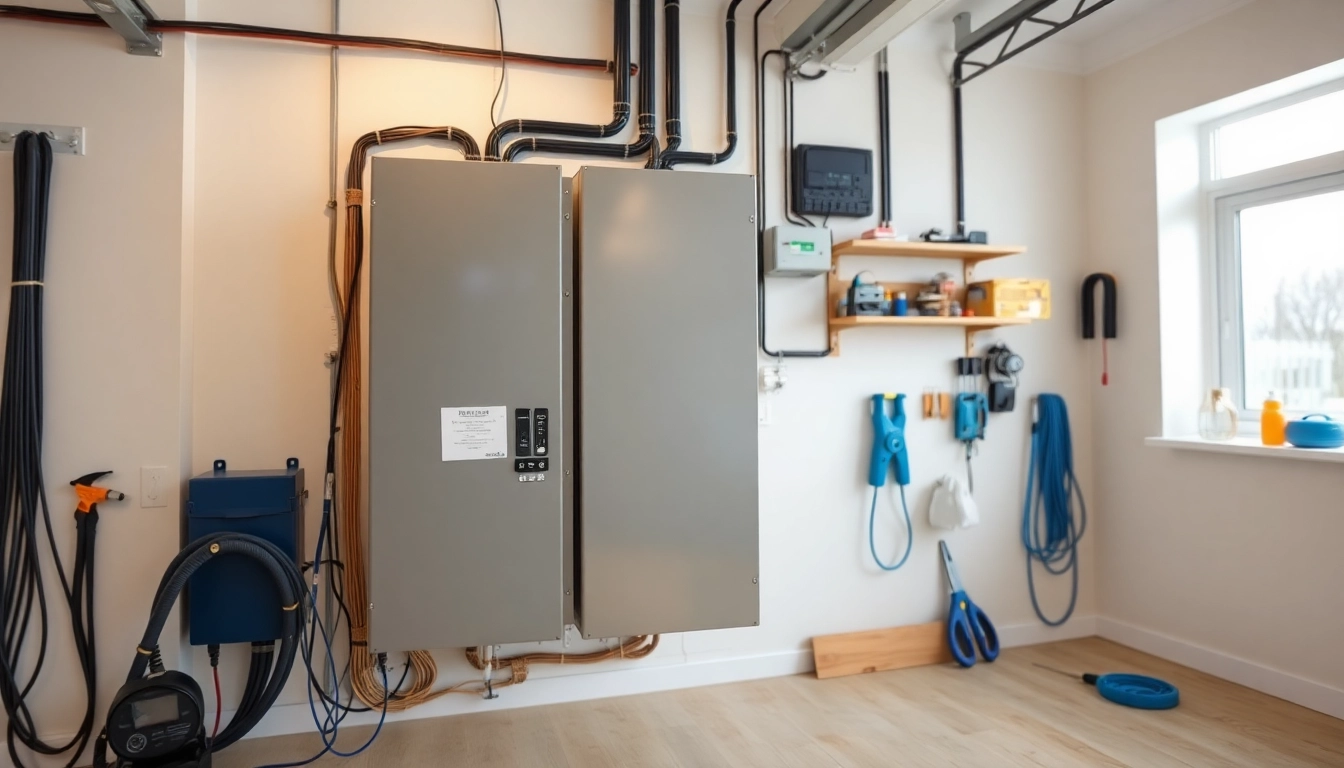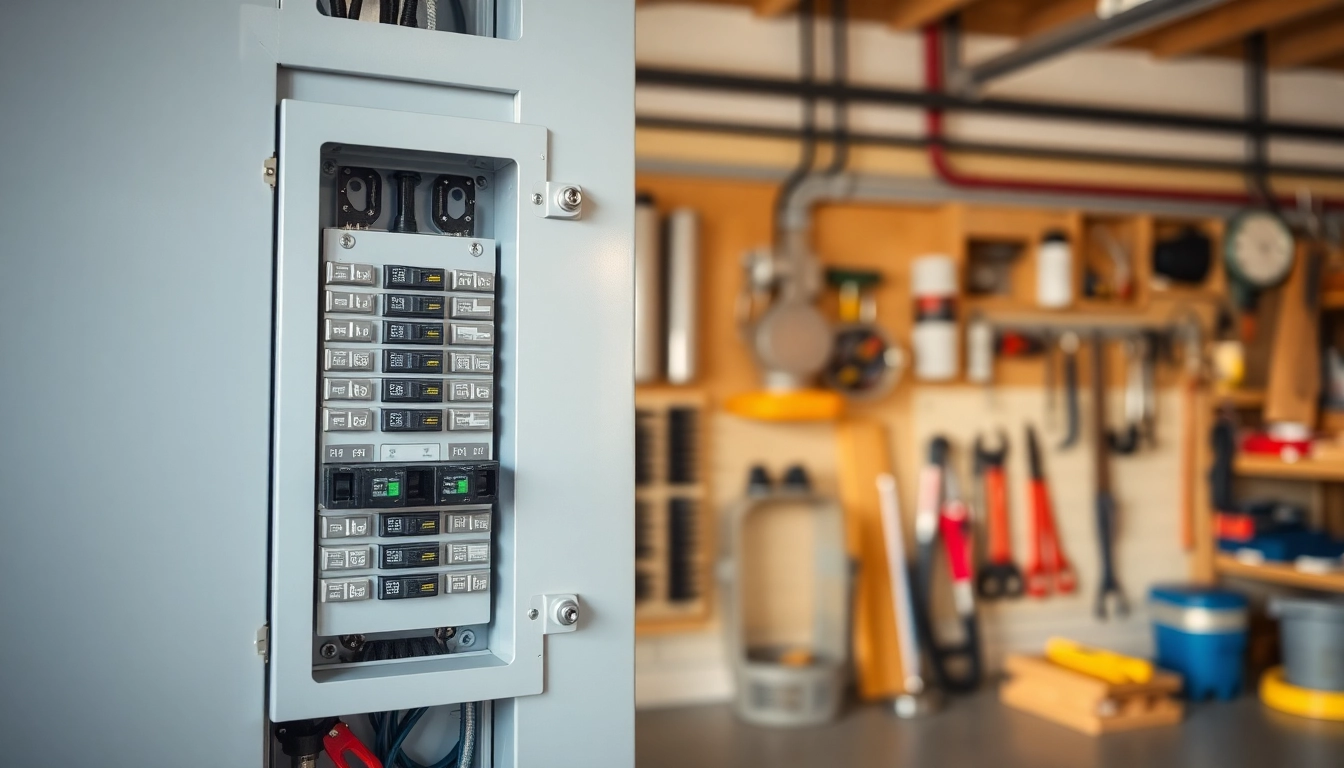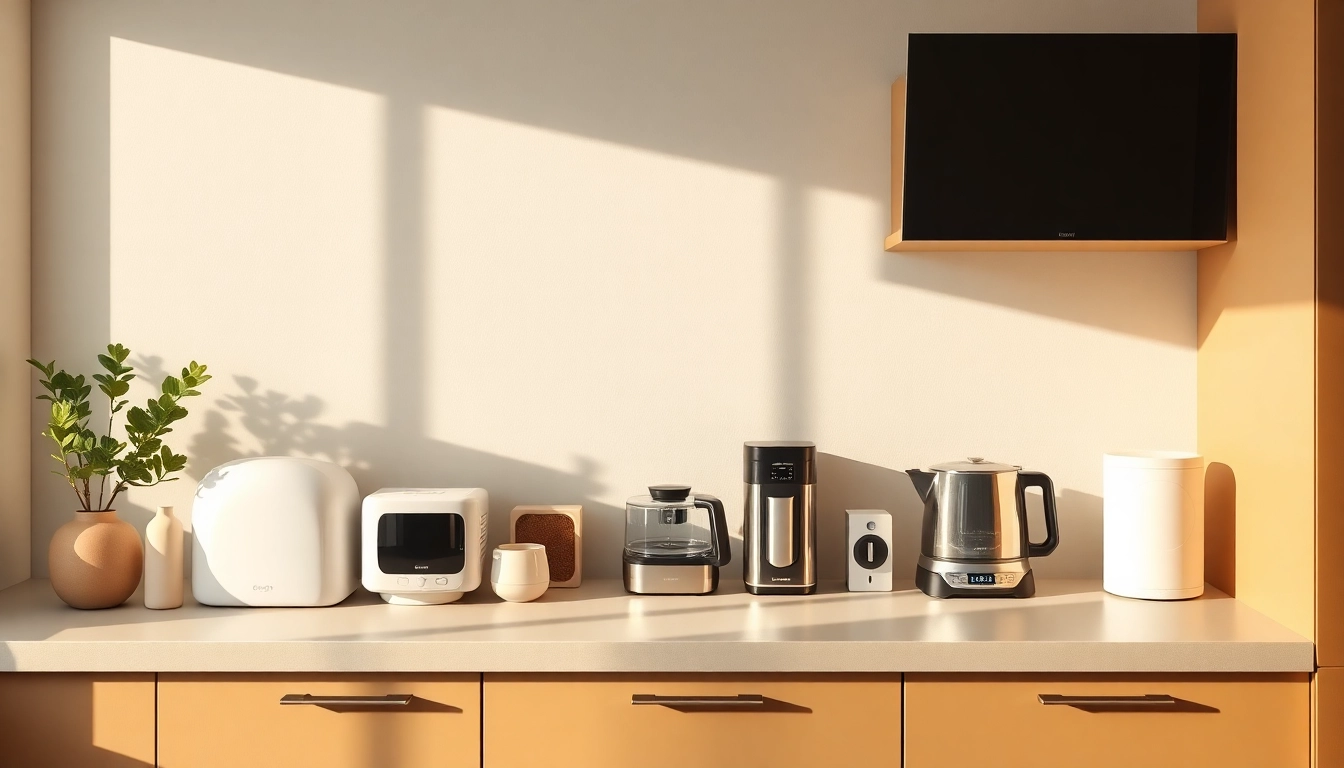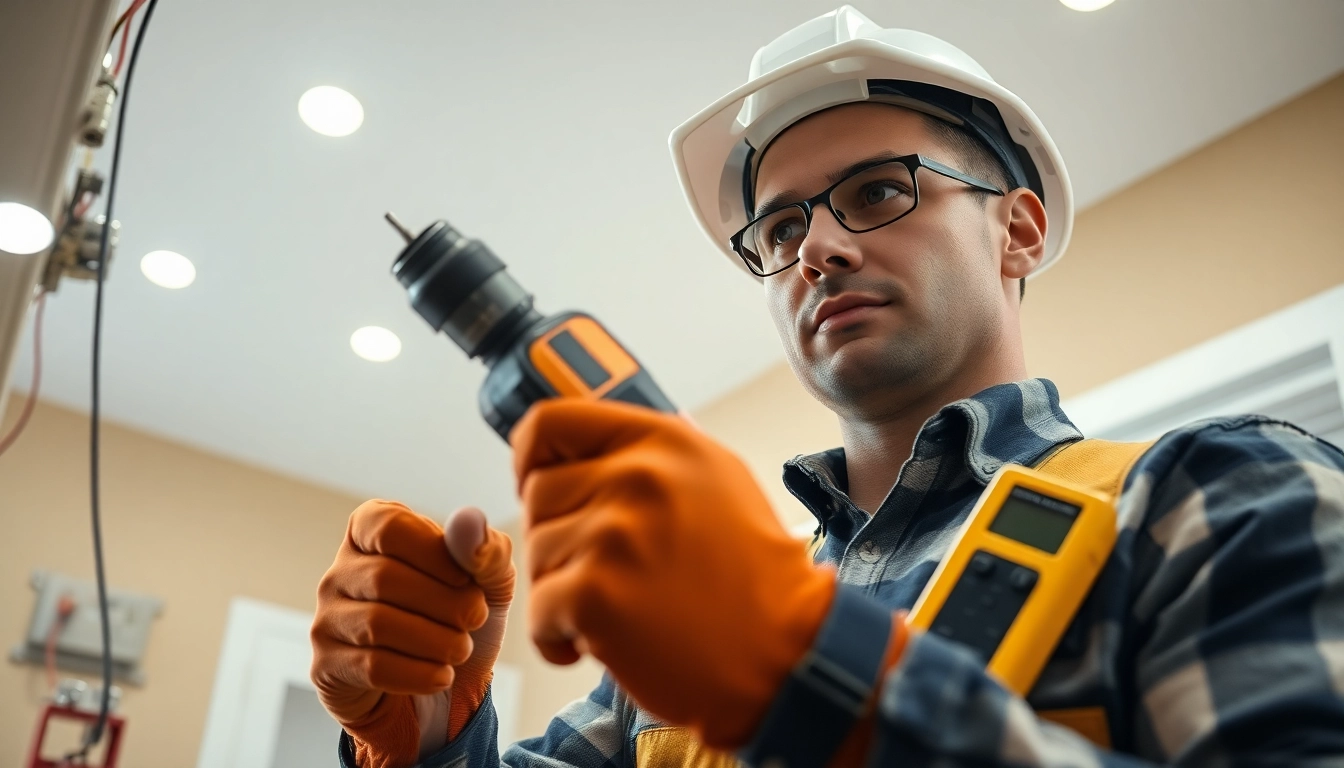Understanding the Electrical Panel
What is an Electrical Panel?
An electrical panel, often referred to as a breaker box or distribution board, is a crucial component of your home’s electrical system. It serves as the central hub where electricity from the utility company enters your home and gets distributed to various circuits that power everything from lights to appliances. This device not only ensures that power reaches its intended destinations efficiently but also plays a vital role in protecting your home from electrical hazards by controlling and supervising the electrical flow.
The Electrical Panel acts as an interface between the electrical service supplied by the utility company and the myriad of circuits in your home. Here, it houses breakers or fuses that automatically shut off power in the event of overloads, providing a vital safety function.
Types of Electrical Panels
Electrical panels come in various types, each designed to cater to specific needs and configurations. The most commonly used types include:
- Main Breaker Panel: This is the most common type for residential properties. It features a main circuit breaker that can shut off all electricity supply to the panel.
- Subpanels: These are smaller panels that distribute power to specific areas or appliances within your home. They are often used in larger homes or when a particular area requires additional circuits.
- Smart Panels: These modern panels incorporate technology for monitoring energy usage, providing remote control, and even offering smart grid capabilities.
Key Components of an Electrical Panel
An understanding of the key components of an electrical panel is essential to grasping its functionality:
- Main Breaker: The primary switch that controls power to the entire panel.
- Circuit Breakers: These protect individual circuits. If an overload occurs, they automatically trip to prevent damage or fire hazards.
- Bus Bars: These conduct electric current to the breakers, distributing power efficiently across all circuits.
- Ground Bar: A metal bar that connects the wiring to the ground, minimizing the risk of shocked by fixing potential faults.
Signs You Need to Upgrade Your Electrical Panel
Increased Power Demands
As households evolve, so do their electrical needs. Increased use of electronic devices, home appliances, and smart home systems can place a strain on older electrical panels that were not designed for today’s power demands. If you find yourself frequently experiencing power surges or fluctuations, it may be time to consider an upgrade.
Frequent Tripped Breakers
Recurrent tripping of circuit breakers can be a warning sign of an overloaded system. Each breaker is designed to handle a specific amount of load, and if these limits are consistently surpassed, it may indicate that your panel is not equipped to manage your electrical demands adequately. This issue can not only interrupt the functionality of your home but also poses potential safety risks.
Old or Outdated Equipment
If your home still uses a fuse box rather than a modern circuit breaker panel, or if your current panel is 20-30 years old, it might not comply with modern safety standards or be reliable for today’s energy needs. Older panels may lack the necessary safety technology that protects against overloads and shorts, making an upgrade essential for ensuring continued safety and efficiency.
Benefits of Upgrading Your Electrical Panel
Improved Safety Standards
Upgrading your electrical panel not only enhances your home’s electrical capacity but significantly improves safety. Modern electrical panels conform to current building codes and safety standards, offering essential features such as AFCI (Arc Fault Circuit Interrupters) and GFCI (Ground Fault Circuit Interrupters), which help to prevent electrical fires and reduce the risk of shock.
Increased Home Value
An upgraded electrical panel can boost the value of your home. Potential homebuyers are often wary of homes with outdated electrical systems due to the potential for costly renovations or safety risks. A modern electrical panel signals to buyers that the property is well-maintained and safe, thereby enhancing market appeal.
Better Energy Efficiency
Newer electrical panels provide improved energy efficiency that can lead to lower utility bills. Many modern panels are designed to work with energy-efficient appliances and renewable energy sources, allowing homeowners to maximize their energy usage while minimizing waste.
How to Choose the Right Electrical Panel
Assessing Your Power Needs
Choosing the right electrical panel begins with understanding your power needs. Begin by taking inventory of all the current appliances, gadgets, and systems in use. Consider future needs as well; for example, if you plan to renovate or add more electronics, this should factor into your decision.
Understanding Panel Ratings
Electrical panels come with varying amperage ratings—common sizes range from 100 amps to 400 amps. Your selection must align with your current and future power demands. A professional electrician can help you assess your requirements based on your household’s expected needs.
Evaluating Installation Requirements
Installation requirements can differ significantly depending on the size and type of electrical panel you choose. Factors such as the existing electrical infrastructure, local building codes, and zoning regulations can affect installation. It’s recommended to engage a licensed electrician to conduct an assessment and provide guidance on compliance and installation logistics.
Cost Considerations for Upgrading Your Electrical Panel
Components and Equipment Costs
The cost of upgrading an electrical panel can vary widely based on the panel size and components required. Basic panels can range from $250 to $450, but more advanced models that support greater amperage or smart technologies may exceed $1000. Always factor in the cost of additional equipment such as breakers, wiring, and any necessary upgrades to your home’s infrastructure.
Labor and Installation Expenses
The labor component of an electrical panel upgrade can also contribute significantly to the total cost. Depending on the complexity of the installation, you might expect to pay a licensed electrician anywhere from $500 to $1500 for labor. Always acquire and compare quotes from different service providers to ensure you receive competitive pricing.
Potential Savings on Energy Bills
While the upfront investment in an upgraded electrical panel may seem substantial, it can lead to future savings, particularly in energy costs. Modern panels designed for efficiency can help you reduce your energy usage over time. Additionally, the use of energy-efficient appliances in conjunction with a new panel may yield significant long-term savings on utility bills.














Leave a Reply